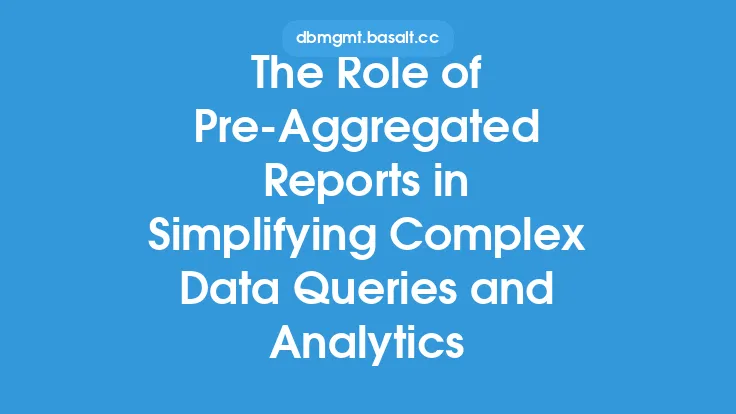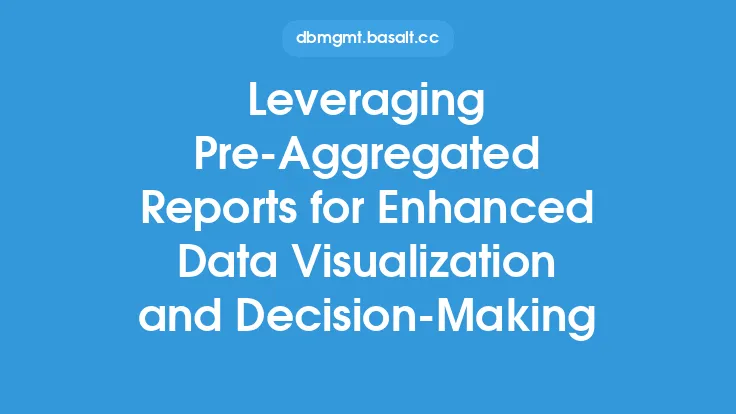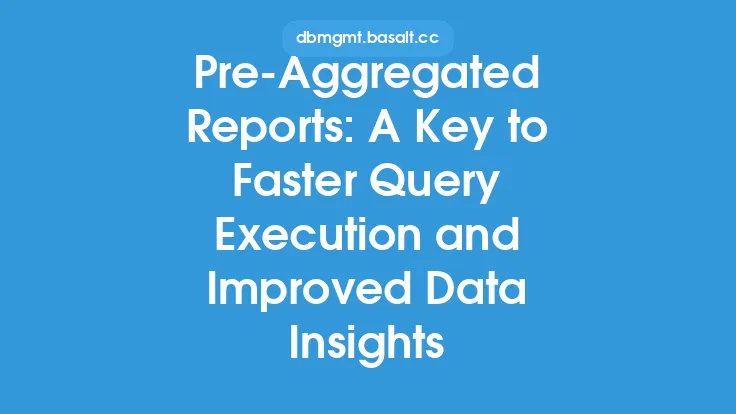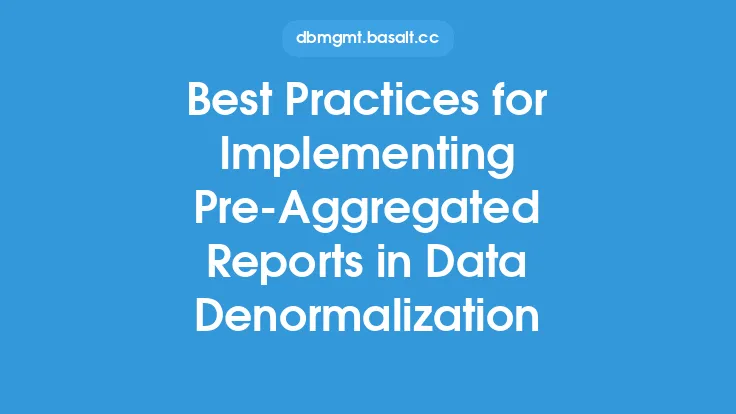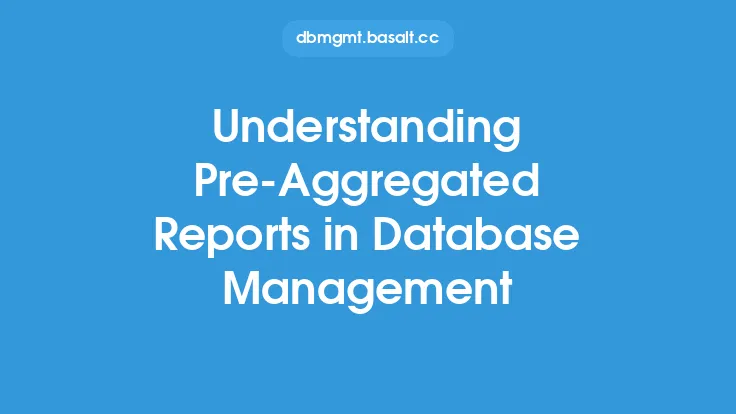Data analysis is a crucial aspect of business decision-making, and it relies heavily on the ability to extract insights from large datasets. One technique that has gained popularity in recent years is the use of pre-aggregated reports. Pre-aggregated reports are a type of data denormalization that involves pre-calculating and storing aggregated data in a separate table or database. This approach has several benefits that make it an attractive solution for data analysis.
What are Pre-Aggregated Reports?
Pre-aggregated reports are a type of data storage that involves pre-calculating and storing aggregated data in a separate table or database. This approach is different from traditional data storage, where data is stored in its raw form and aggregated on the fly when a query is executed. Pre-aggregated reports are typically used to improve query performance and reduce the load on the database. By storing aggregated data in a separate table, pre-aggregated reports can provide faster query execution and improved data insights.
Benefits of Pre-Aggregated Reports
The benefits of pre-aggregated reports are numerous. One of the primary advantages is improved query performance. By storing aggregated data in a separate table, pre-aggregated reports can reduce the amount of time it takes to execute a query. This is because the database does not have to spend time aggregating the data on the fly, which can be a time-consuming process. Instead, the pre-aggregated data can be retrieved directly from the table, providing faster query execution and improved data insights.
Another benefit of pre-aggregated reports is reduced database load. When a query is executed, the database has to work hard to aggregate the data and provide the results. This can put a significant load on the database, especially if the query is complex or involves large amounts of data. Pre-aggregated reports can reduce this load by storing the aggregated data in a separate table, which can be retrieved quickly and easily. This can help to improve database performance and reduce the risk of database crashes or slowdowns.
Pre-aggregated reports can also provide improved data insights. By storing aggregated data in a separate table, pre-aggregated reports can provide a more detailed and nuanced view of the data. This can be especially useful for business intelligence and data analysis, where the goal is to extract insights and trends from large datasets. Pre-aggregated reports can provide a more detailed view of the data, which can help to identify trends and patterns that may not be apparent from the raw data.
How Pre-Aggregated Reports Work
Pre-aggregated reports work by pre-calculating and storing aggregated data in a separate table or database. This process typically involves several steps. First, the data is extracted from the raw data source and aggregated using a set of predefined rules. The aggregated data is then stored in a separate table or database, which can be optimized for query performance.
When a query is executed, the database can retrieve the pre-aggregated data directly from the table, rather than having to aggregate the data on the fly. This can provide faster query execution and improved data insights. The pre-aggregated data can also be updated periodically to reflect changes in the underlying data, which can help to ensure that the data remains accurate and up-to-date.
Types of Pre-Aggregated Reports
There are several types of pre-aggregated reports, each with its own strengths and weaknesses. One common type is the summary table, which stores aggregated data at a high level of granularity. Summary tables are often used to provide a broad overview of the data, and can be useful for identifying trends and patterns.
Another type of pre-aggregated report is the data mart, which stores aggregated data in a separate database or table. Data marts are often used to provide a more detailed view of the data, and can be useful for business intelligence and data analysis.
Best Practices for Using Pre-Aggregated Reports
There are several best practices for using pre-aggregated reports. One of the most important is to carefully design the pre-aggregated report to meet the needs of the business. This involves identifying the key metrics and dimensions that are required, and designing the report to provide the necessary level of granularity and detail.
Another best practice is to regularly update the pre-aggregated report to reflect changes in the underlying data. This can help to ensure that the data remains accurate and up-to-date, and can provide a more detailed view of the data over time.
Common Use Cases for Pre-Aggregated Reports
Pre-aggregated reports have a wide range of use cases, from business intelligence and data analysis to data visualization and decision-making. One common use case is to provide a summary view of sales data, which can help to identify trends and patterns in customer behavior.
Another use case is to provide a detailed view of customer demographics, which can help to identify target markets and opportunities for growth. Pre-aggregated reports can also be used to provide a real-time view of operational data, which can help to identify areas for improvement and optimize business processes.
Conclusion
In conclusion, pre-aggregated reports are a powerful tool for data analysis and business intelligence. By pre-calculating and storing aggregated data in a separate table or database, pre-aggregated reports can provide faster query execution and improved data insights. The benefits of pre-aggregated reports include improved query performance, reduced database load, and improved data insights. By carefully designing and implementing pre-aggregated reports, businesses can gain a more detailed and nuanced view of their data, and make better decisions as a result.
